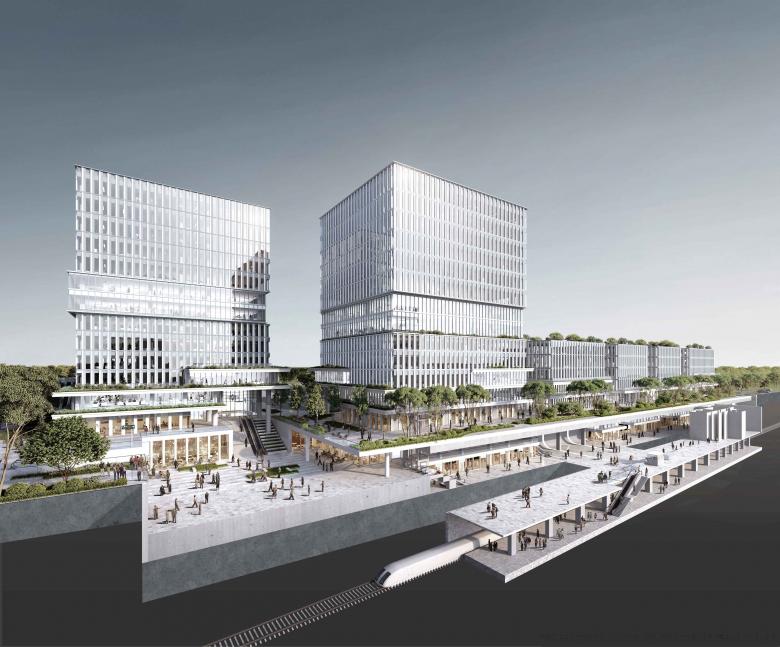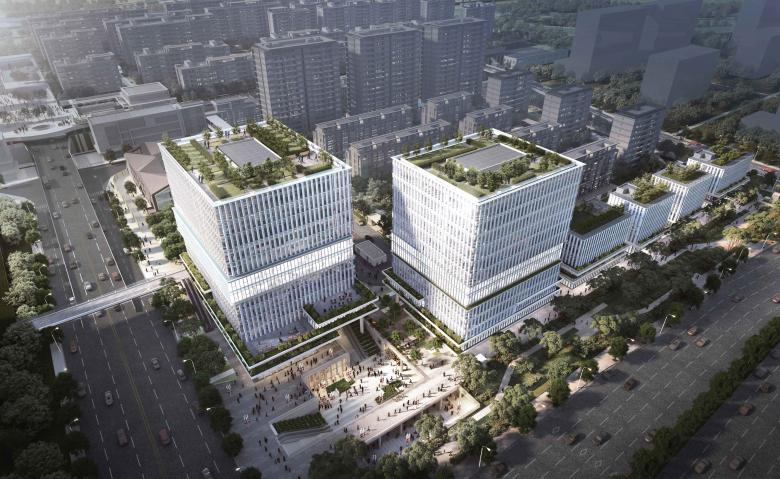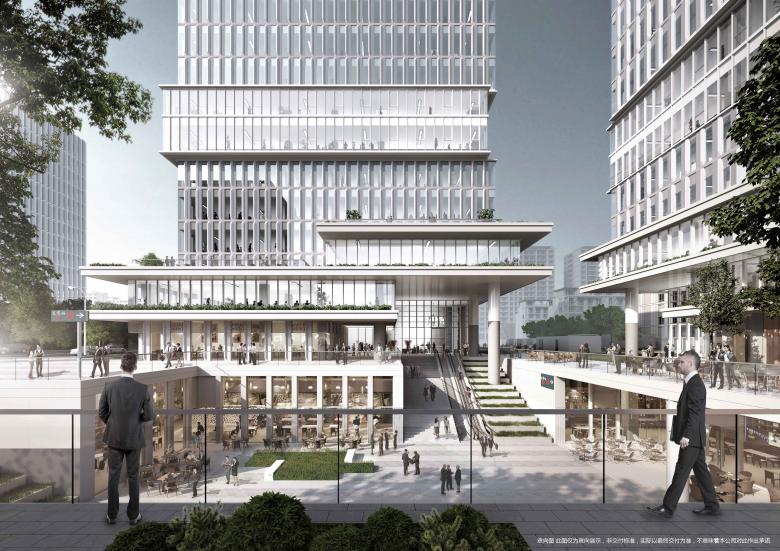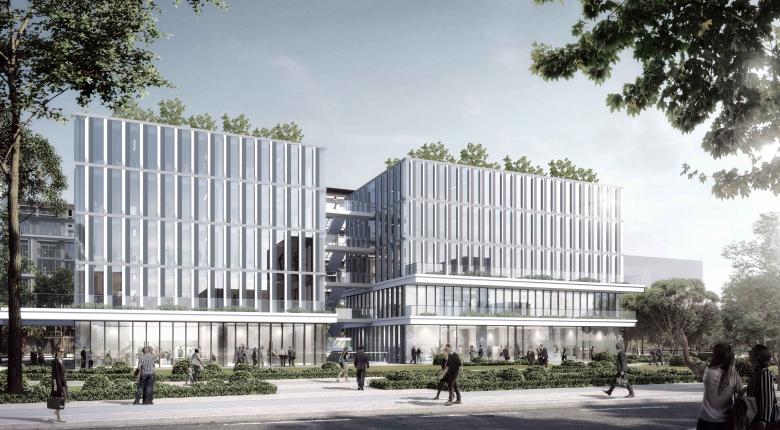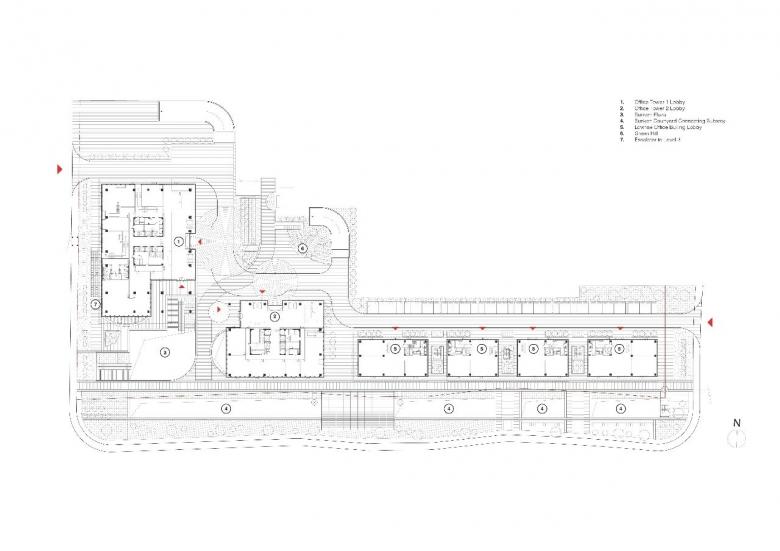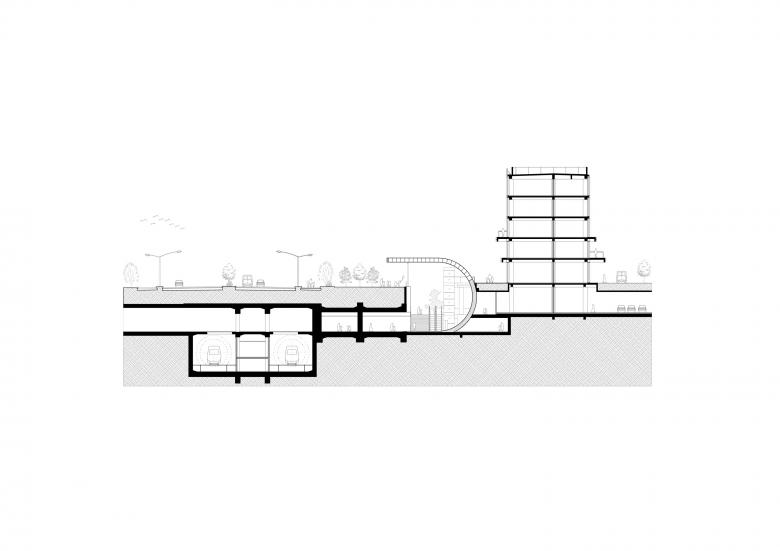Hangzhou Sky City
Back to Projects list- Location
- Haishu Road, 310000 Hangzhou, China
- Year
- 2020
- Team
- Carolyn Leung, Ben de Lange, Ruben Bergambagt. Yunqiao Du, Ana Raluca Timisescu, Arianna Bavuso, Valentin Račko, Xiaoyu Xu, Jay Peng, Inci Lize Ogun
Superimpose designed a vibrant Transit Oriented Development (TOD) of 78,000 square meters for a joint venture client group of Vanke Hangzhou and the Hangzhou Subway Group. Superimpose won the architecture bidding competition for this plot as part of a SOM designed masterplan, which is set to become the new Silicon Valley of Hangzhou. The jury praised Superimpose’s design as a unique and creative understanding and interpretation of TOD city planning.
The TOD will become the main connection and transportation hub of the ‘Uni City’, a one million square meter development in the Yuhang District, West of Hangzhou. This development will anchor and elevate the importance of Hangzhou and will host headquarters of Chinese mega e-commerce companies such as Alibaba and Tencent.
The TOD plot is situated along the main road through Uni-City and is directly connected to the main subway station. The program of the site consists of two Grade-A office towers of 54 meters high on top of a stacked retail podium, flanked by four individual office blocks of 24 meters high. Superimpose’s site is the only development directly connected to the subway station in the entire Uni-City development. Superimpose recognised the importance and desired functionality of the main arrival hub, and aims to connect commuters swiftly to the adjacent residential developments, the office towers, schools and cultural centres, whilst simultaneously increasing the retail value of the TOD development itself.
The design is clearly defined by the concept of ‘The Valley’ for the podium level, which includes the levels of the basement up to level three and ‘The Cloud’ for the upper levels.
For ‘The Valley’ Superimpose utilised the green belt zone allocated by the government and transformed part of it to extend the subway arrival hall into a welcoming and open sunken green belt. By bringing daylight into the basement level, the design offers commuters a unique, pleasant and smooth transition from subway arrival to the urban development.
Meanwhile basement retail is comfortably situated along this arrival hall, generating more revenue for the projects’ tenants. The design also dissolves the typical harsh boundary between ground floor levels and subway basement. Covered walkways connect the arrival plaza to retail streets and to the main sunken courtyard, which allows for office workers to conveniently access the office towers.
Hovering building volumes at the non-typical second and third floors create canopies to the sunken courtyard, retail and office lobbies and by doing so emphasize their programmatic special functions such as a large co-working space and a bookstore. Strategically placed staircases and escalators connect the basement to the upper floors and ultimately to the pedestrian bridge on level 3, which is connecting to the adjacent cultural plot.
‘The Cloud’ is the design concept for the office towers placed on top op the podium. The façade design adopts the horizontal language of the cantilevering boxes on level two and three by emphasizing the horizontal slabs in the facade.
The simple tower massing was mainly a result of a dense site, which gave limitations to the massing possibilities. In order to break down the large massing volume, Superimpose applied a volumetric approach to the façade of the towers instead, by using different material applications and shadow gaps to visually split the tower massing in horizontal and vertical direction. The façade module itself is repetitive, and integrates operable façade panels to avoid typical operable window details. The façade material for the lower ‘volumes’ is a white matt stone panel to match the materialisation of the lower podium volumes. The upper façade volumes make use of a reflective ‘brushed’ aluminium panel and reflective glass to reflect the clouds and gradiently make the building dissolve into the clouds
